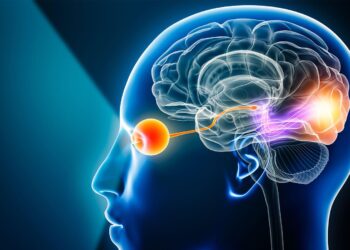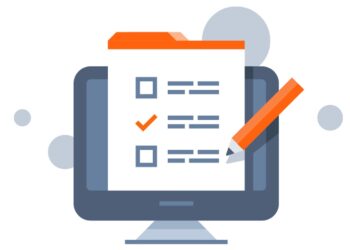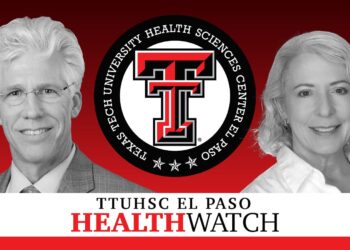More vigilance may be needed regarding the amount of benzodiazepines being dispensed to older stroke survivors, though prescription patterns at the national level have improved in recent years.
Medicare records showed that within 90 days of discharge following an acute ischemic stroke, 4.9% of patients 65 years or older initiated a benzodiazepine (most commonly lorazepam [Ativan] and alprazolam [Xanax]). Of these first fills, 76% involved a supply for over 7 days and 55% were for between 15 and 30 days, reported Julianne Brooks, MPH, of Massachusetts General Brigham in Boston, and colleagues.
They observed a modest decline in nationwide benzodiazepine initiation from approximately 5.0% in 2013 to 3.5% in 2021. Even so, “we noted excessive supplies in prescriptions post-acute ischemic stroke discharge, underscoring the need for improved policies,” Brooks and colleagues wrote in Stroke.
“Benzodiazepines can be used in acute stroke care for a variety of purposes, which range from periprocedural sedation to managing short-term complications such as insomnia, depression, and anxiety. However, there are multiple other pharmacological and nonpharmacological options, such as antipsychotics, which could be considered concerning patient-specific factors directly related to the odds of adverse events and treatment success,” the authors suggested.
The American Geriatrics Society strongly advises that older adults avoid benzodiazepines as much as possible. Individuals age 65 and older are generally cautioned against these drugs due to increased sensitivity to side effects, decreased metabolism, and potential misuse. In the stroke setting in particular, the risks of dementia, falls, and a severe subsequent stroke are additional concerns, according to the study authors.
“However, there may be cases where benzodiazepines are prescribed to be used as needed,” Brooks acknowledged in a press release. “For example, to treat breakthrough anxiety, a provider may prescribe a few pills and counsel the patient that the medication should only be used as needed. The increased risks of dependence, falls, and other harmful effects should be discussed with the patient.”
“Despite declining trends in benzodiazepine prescriptions, it is necessary to note that use remains alarming in the United States as it represents the third most-used illicit or prescription drug in the country, with use registered for ≈2.2% of the population,” the authors stressed. “Overprescribing of benzodiazepine can lead to leftover pills, which can be misused or redirected … This is hardly a problem faced by the United States alone, as prescriptions have similarly been shown to be frequent and mostly inappropriate in many European countries.”
Justin MacKenzie, PhD, of Southern Utah Psychological Consultants in Saint George, and Veronica Moreno-Gomez, MD, of University of Utah School of Medicine in Salt Lake City, agreed that the present findings show a “concerning pattern of possible [benzodiazepine] overprescription” and lamented the limited access to mental health services after stroke.
“These limitations require stroke physicians to often become the first line of treatment for PSA [post-stroke anxiety] and sometimes are the only option available. However, utilizing a comprehensive approach to PSA in older adults, including screening and appropriate pharmacological interventions, can support the optimal recovery of this vulnerable population,” the pair commented in an accompanying editorial.
“In an ideal environment, older adults after a stroke would receive accurate diagnosis and high-quality treatment for PSA. This would involve early identification and screening of individuals at risk for developing PSA along with access to specialty psychiatric and psychological services,” MacKenzie and Moreno-Gomez wrote.
They urged more efforts for greater understanding of post-stroke anxiety, which they said “continues to receive less attention than post-stroke depressive disorders” despite a similar prevalence.
For their retrospective analysis, Brooks and colleagues relied on a 20% sample of U.S. Medicare claims from April 2013 to September 2021. They selected a population of stroke survivors 65 years or older who had traditional Medicare coverage and 6 months’ prior enrollment in Parts A, B, and D.
The investigators excluded those with prior benzodiazepine prescriptions, self-discharge, or discharge to skilled nursing facilities.
Their final study cohort counted over 126,000 people (mean age 78 years, 54% women, 82% white). The mean Charlson comorbidity score was 1.38. Acknowledging the incomplete NIH Stroke Scale (NIHSS) data, as this variable was only added to the dataset in October 2016, the investigators calculated a median NIHSS of 3. Each person had a median 3-day length of stay for the index stroke.
Benzodiazepine initiation rates were somewhat higher for women (5.5% vs 3.8% in men), Hispanic (5.8%) and white (5.0%) patients, as well as people living in the Southeast (5.1%), the group reported.
Whether the study’s findings are generalizable to other populations is unknown. Moreover, the authors acknowledged that they couldn’t be certain how much of the prescribed medication each patient actually took.
Disclosures
The study was funded by an NIH grant.
Brooks had no disclosures.
Study co-authors reported various relationships with public and private institutions.
MacKenzie receives support from the NIH and the Craig H. Neilsen Foundation. Moreno-Gomez had no disclosures.
Primary Source
Stroke
Source Reference: Lomachinsky Torres V, et al “Benzodiazepine utilization in ischemic stroke survivors: analyzing initial excess supply and longitudinal trends” Stroke 2024; DOI: 10.1161/STROKEAHA.124.047257.
Secondary Source
Stroke
Source Reference: MacKenzie JJ, Moreno-Gomez V “Poststroke anxiety: the other poststroke mood disorder” Stroke 2024; DOI: 10.1161/STROKEAHA.124.048771.
Source link : https://www.medpagetoday.com/psychiatry/anxietystress/112444
Author :
Publish date : 2024-10-17 19:27:12
Copyright for syndicated content belongs to the linked Source.


![author['full_name']](https://www.newshealth.biz/wp-content/uploads/2024/10/Stroke-Survivors-Still-Prescribed-a-Concerning-Amount-of-Benzos.jpg)












